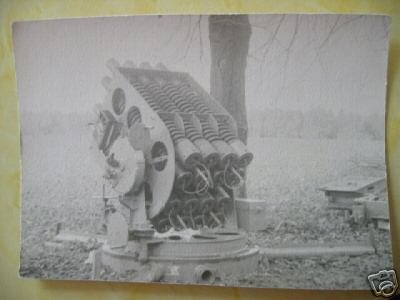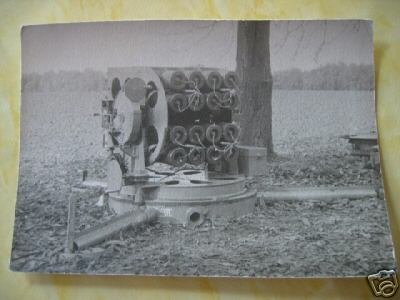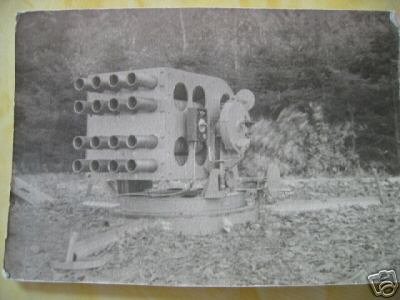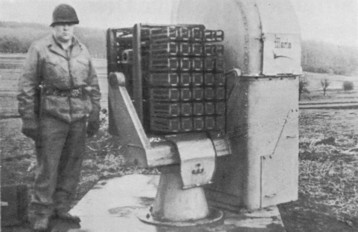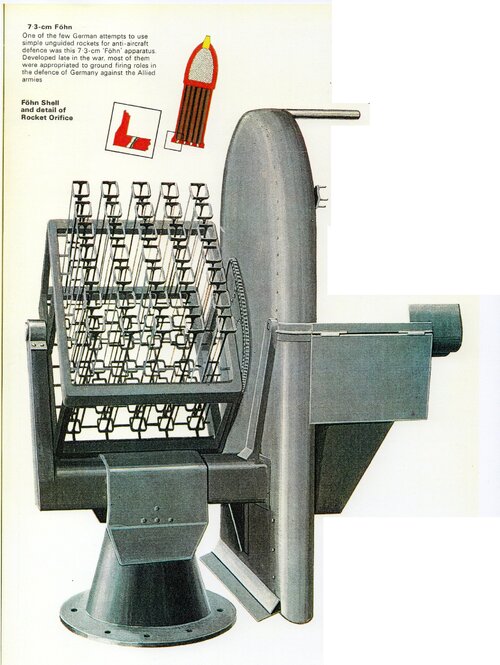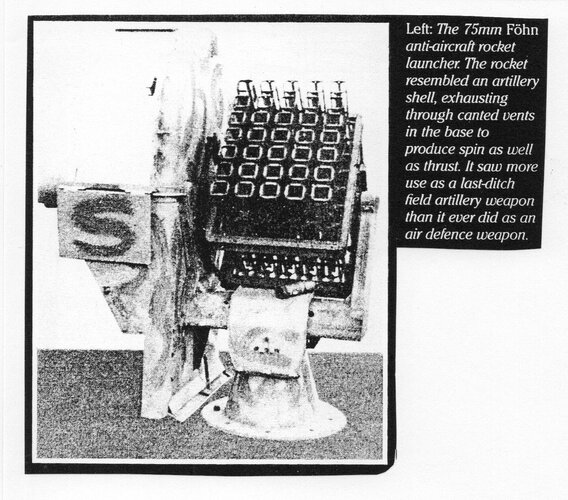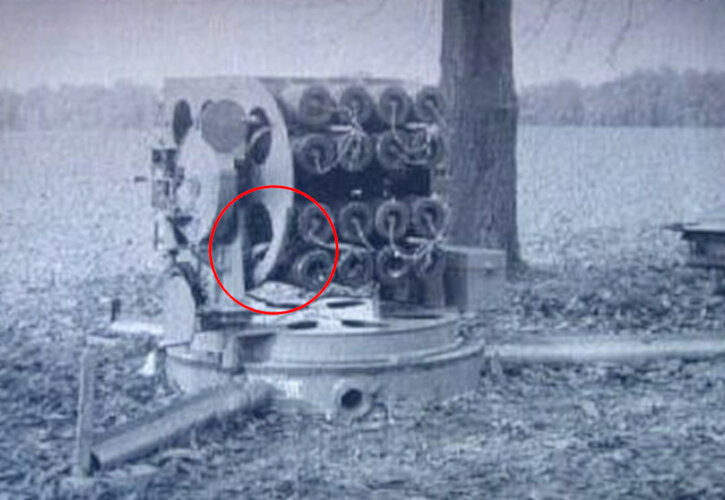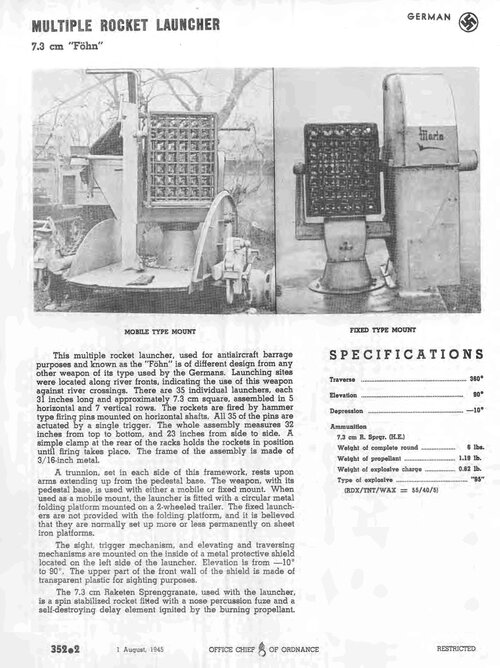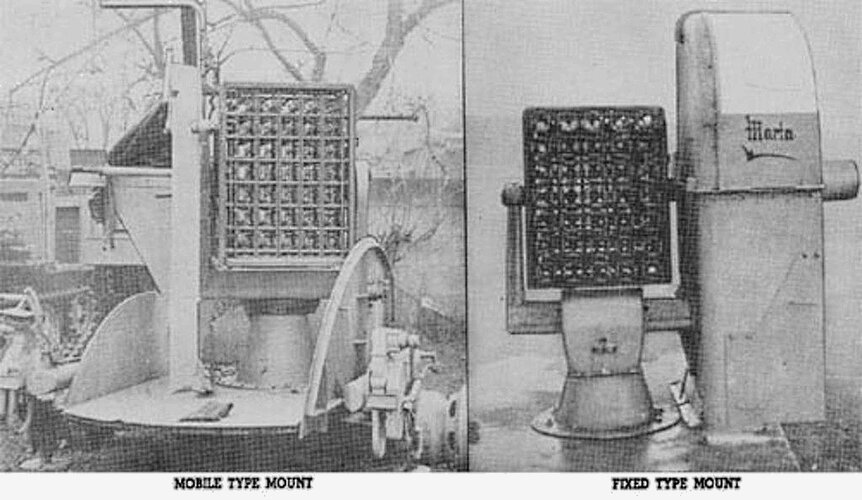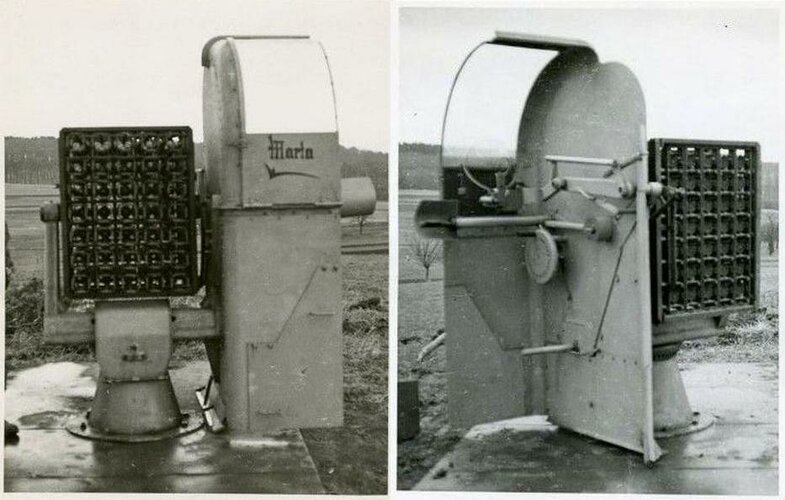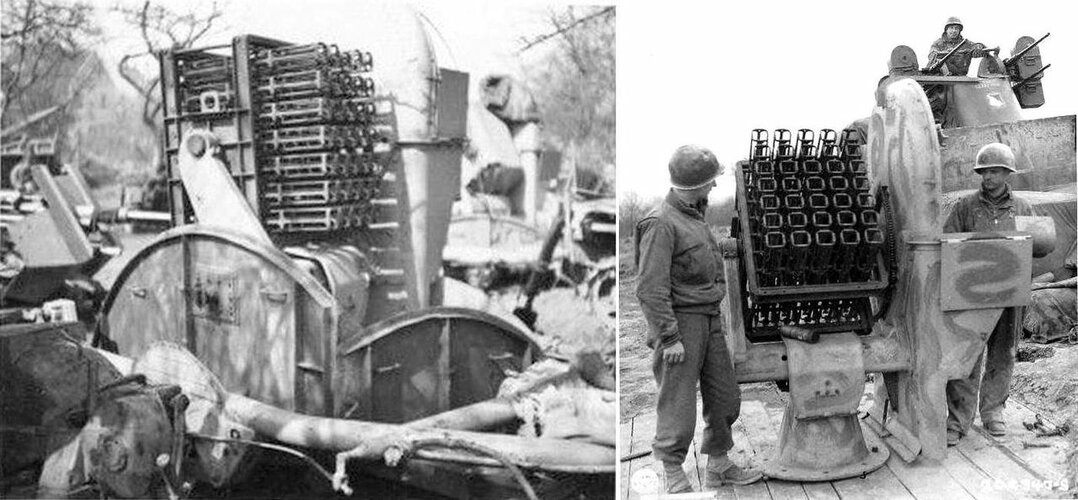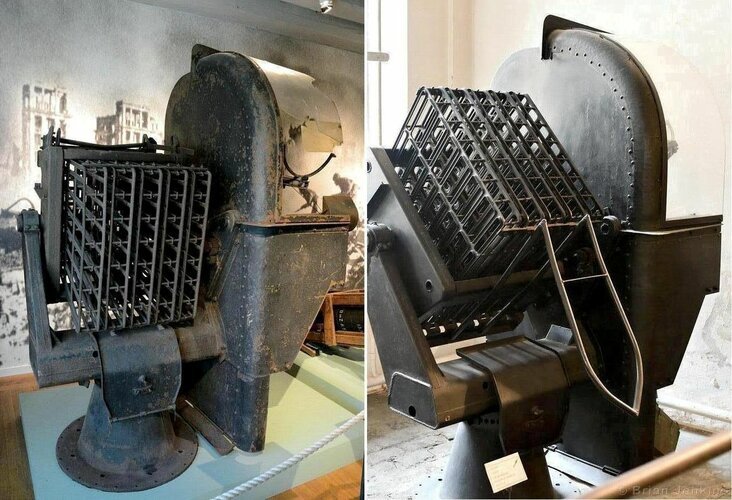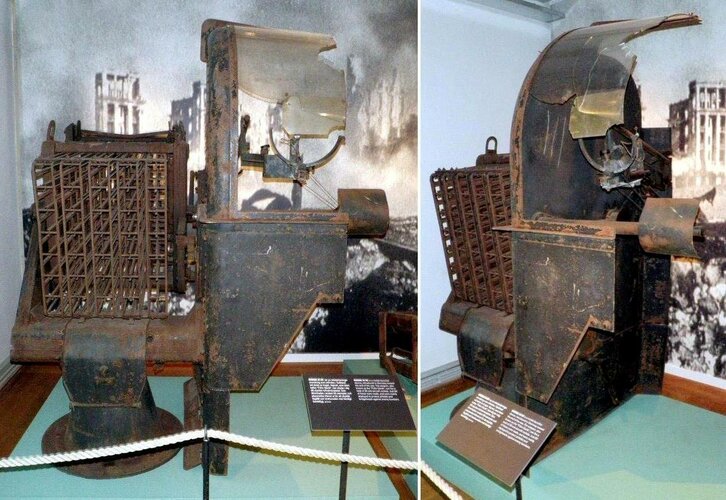panzer1946
Rammtiger
- Joined
- 4 May 2009
- Messages
- 22
- Reaction score
- 6
Hello,
I found these 3 photos on the net somewhere. The only thing my notes say about it is that it is:
1. German origin
2. multiple barreled rocket gun
3. circa WW2
Can anyone verify the above, give dimensions of the unit and rockets, and also put a name to apparatus?
Thanks,
Tony "Panzer 1946" Ivey
I found these 3 photos on the net somewhere. The only thing my notes say about it is that it is:
1. German origin
2. multiple barreled rocket gun
3. circa WW2
Can anyone verify the above, give dimensions of the unit and rockets, and also put a name to apparatus?
Thanks,
Tony "Panzer 1946" Ivey

